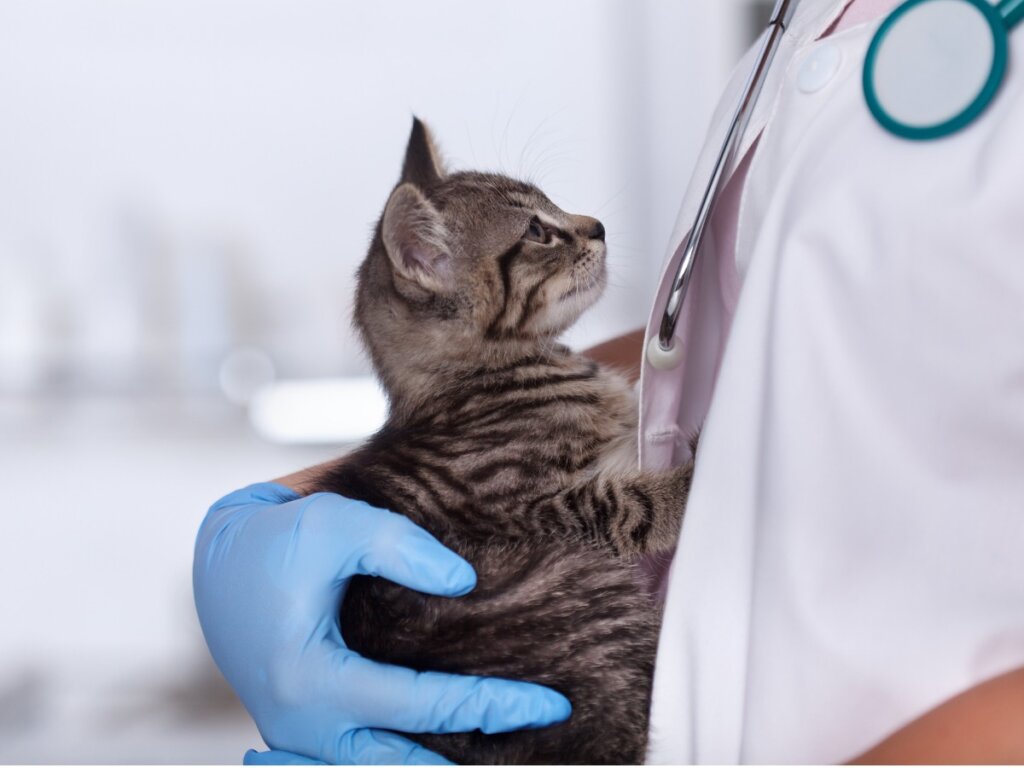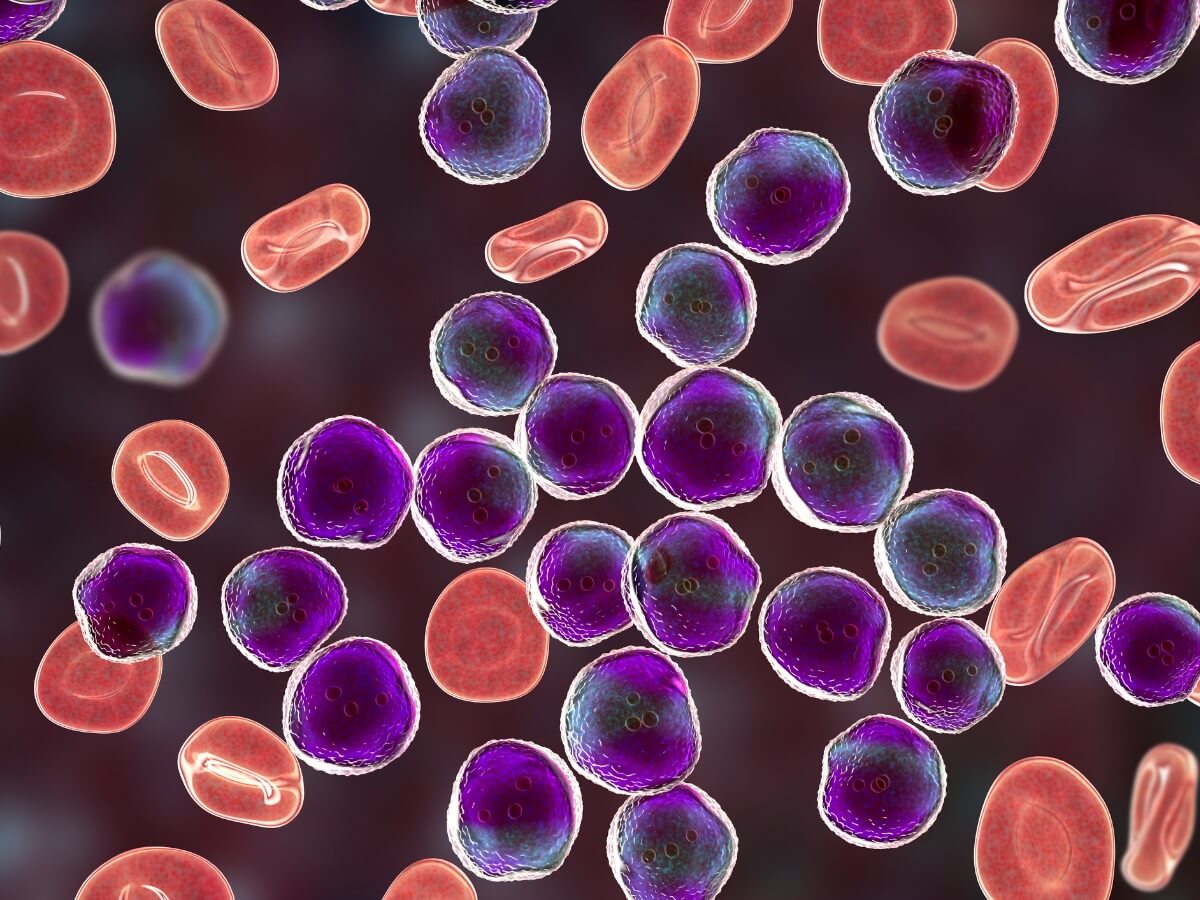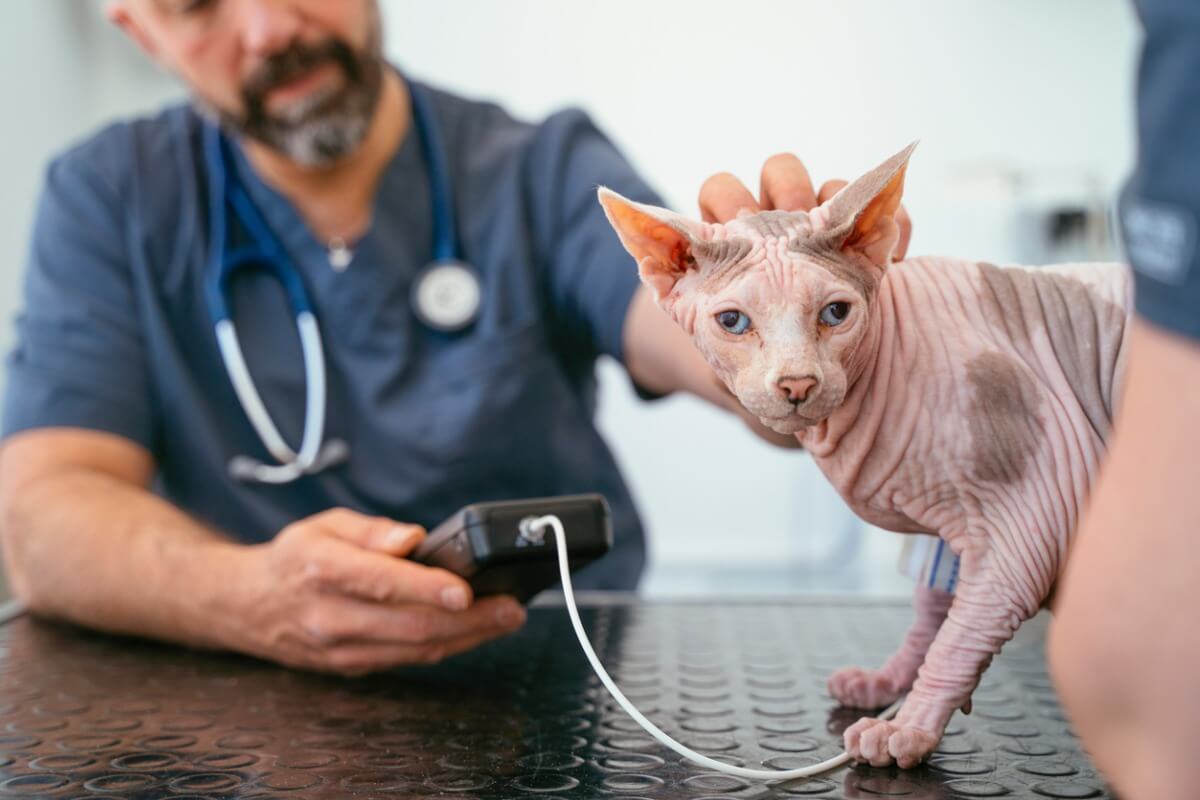Lymphoma in Cats: Causes, Symptoms and Treatment

It#s estimated that 1 in 5 cats will develop cancer throughout their lives, a probability that increases exponentially with the age of the feline. Some are more serious and difficult to treat than others, but lymphoma in cats (one of the most common) has a disastrous prognosis in the absence of treatment. The cat with lymphoma lives on average 4 weeks if not treated by a vet.
This type of feline cancer is systemic and very difficult to treat, but with the recommended therapy the survival of the patient can be slightly prolonged. Discover with us the causes, symptoms, and treatment of lymphoma in cats in the following lines.
What is lymphoma in cats?
First of all, it’s necessary to emphasize that the term “cancer” refers to a heterogeneous set of diseases. However, they all have something in common. Regardless of their location, atypical cell growth always occurs in these conditions due to the genetic mutation of a line of cells.
Normally, the unbridled growth of a specific tissue gives rise to a tumor, which can grow and spread to other parts of the body, causing the dreaded metastasis. The rest of the tumors that appear in the body will derive from the initial focus of malignant cells, which is why they’re considered secondary cancers.
As indicated by the VCA Hospitals portal, feline lymphoma is different from common cancers, since it occurs systemically. This disease arises from an excessive proliferation of lymphocytes (white blood cells) that travel through the blood and the lymphatic system, so the signs of the disease are generalized.
Lymphoma is a very common type of cancer in cats. It affects 48 out of every 100,000 individuals and represents 30% of total cancers in this species.

Types and symptoms
Lymphoma in cats can be classified according to the type of excessively proliferating cells (B or T lymphocytes) or the location of the malignant neoplasm activity. We’ll now go over the different types that exist from a veterinary point of view and the symptoms that they cause.
Gastrointestinal lymphoma
As its name suggests, this is the type of lymphoma that most obviously affects the cat’s gastrointestinal tract. It’s the most common variant within this pathological group, as it responds to 50-70% of lymphomas in feline pets. It appears especially in the senior age, between 9 and 13 years old.
This type of cancer can be high-grade (rapid expansion) or low-grade (slow division), which determines how quickly clinical signs develop. Among the most important, we highlight the following:
- Weight loss
- Constant vomiting
- Diarrhea
- Lack of appetite
Mediastinal lymphoma
As indicated by veterinary portals, this type of cancer affects the lymph nodes of the mediastinum (located in the center of the rib cage) and the thymus gland. The overgrowth of lymphocytes can put pressure on the thorax of the animal and thus make it difficult to breathe. It’s also common for the esophagus to feel pressured, which makes swallowing more difficult.
This variant occurs in cats less than 2 years of age.
Miscellaneous lymphoma
In this case, cell overgrowth occurs in various parts: the central nervous system, the nasal cavity, the skin, the kidneys, and other areas. The most affected area is usually the nasal cavity and this variant is accompanied by strange secretions and difficulty breathing. It is most common in felines between the ages of 5 and 9.
The general symptoms in all cases are apathy, weight loss and eating problems. Respiratory distress is typical of mediastinal lymphoma.
Causes of lymphoma in cats
Talking about exact causality in any type of cancer is complex, since most malignant tumors are caused by a multitude of factors, such as the environment, genetics and the general health of the animal. However, some of the aforementioned variants are linked to other medical conditions.
For example, mediastinal lymphoma is associated with feline leukemia virus (FeLV) in 80% of cases. This infectious agent is established in the bone marrow, the place where all blood bodies are produced (including lymphocytes), so it’s easy to imagine their relationship. 30% of lymphomas in the kidney are also associated with FeLV.
Diagnosis of lymphoma in cats
The symptoms of this type of cancer are quite nonspecific, so several tests may be necessary to find the disease. First, a blood test is always used to detect systemic abnormalities, but this doesn’t provide the full diagnosis on its own.
X-ray, ultrasound, or CT scans will also be necessary in order to find the problem tumor mass. Once detected, a biopsy or fine aspiration is performed to obtain a sample of the group of cells. If the lymphocytes are abnormal and overgrowth, lymphoma is confirmed.
Treatment of lymphoma in cats
Lymphoma is treated with chemotherapy in all cases, since professionals are facing a systemic disease that can’t be addressed with only a surgical resection. Low-grade conditions are treated with the combination of the drugs prednisone and chlorambucil 20 mg / m2. On the other hand, fast-growing lymphomas require more aggressive chemical injections.
Radiation therapy and surgery are designed in very specific cases, such as nasal or abdominal lymphoma, although this is a very rare protocol. On the other hand, if none of these approaches is possible (due to the fragility of the animal and its age), a palliative treatment is used based on prednisolone alone, a steroid that delays the progression of the disease by 2 to 4 months.
Fortunately, chemotherapy is a very well tolerated approach for cats. Only 10% of them have symptoms such as vomiting, diarrhea and dizziness.

Prognosis
Lymphoma in cats that isn’t treated with chemotherapy usually causes the death of the feline in less than 4 weeks. On the other hand, cats that are treated with prednisolone alone can survive for an additional 60-90 days, although this isn’t guaranteed in all cases.
With the proper approach, 75% of cats enter a clear period of remission. However, their average life expectancy, even if everything goes well, is only about 6 months, since relapses are very common. Unfortunately, this condition reports a very poor general prognosis and sometimes the only option is palliative care until death.
All cited sources were thoroughly reviewed by our team to ensure their quality, reliability, currency, and validity. The bibliography of this article was considered reliable and of academic or scientific accuracy.
- Tobey, J. C., Houston, D. M., Breur, G. J., Jackson, M. L., & Stubbington, D. A. (1994). Cutaneous T-cell lymphoma in a cat. Journal of the American Veterinary Medical Association, 204(4), 606-609.
- Simpson, C. J., Mansfield, C. S., Milne, M. E., & Hodge, P. J. (2011). Central diabetes insipidus in a cat with central nervous system B cell lymphoma. Journal of feline medicine and surgery, 13(10), 787-792.
- Benigni, L., Lamb, C. R., CORZO‐MENENDEZ, N. U. R. I. A., Holloway, A., & Eastwood, J. M. (2006). Lymphoma affecting the urinary bladder in three dogs and a cat. Veterinary Radiology & Ultrasound, 47(6), 592-596.
